dailafing
Newbie level 3
There are so many posts online about how Samsungs were identified by the ticking or clicking relays, and everyone said it was almost always a bulging cap, or failing that it was a MOSFET...
Well, my Samsung has just joined the fun, but I was surprised to find that upon disassembly, everything looks fine to me...
No dry joints, or missing solder...
No bulging caps...
No scorching or burning
No cracked resistors or anything..
In fact, by my eye, visually everything is find save for some cobwebs and dust...
So I'd like to kindly refer to the experts here, and ask for a second opinion.
ideally I don't want to have to un solder everything and test it manually, because
1) its a pain, and
2) I don't really know what I'm doing.
I know how to be safe, and I've had my initiation when working on a live iMac pranging myself with 240v to earth via my chest
(Right hand earthed by holding metal LCD bezel, and left knuckle touching live 240v feed)
Please see video and pictures of my power board, (BN44-00162A, PSPF531801A, W2A)
Thanks
I did a 720p YouTube video passing over the circuits Here:
http://youtu.be/4R4cOi2Yr04
**broken link removed**
**broken link removed**
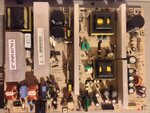
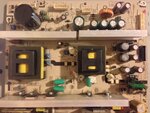
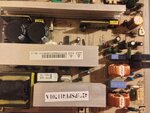
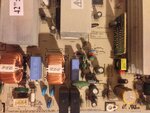
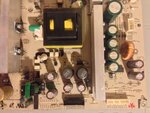
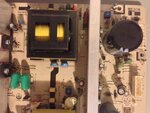
Well, my Samsung has just joined the fun, but I was surprised to find that upon disassembly, everything looks fine to me...
No dry joints, or missing solder...
No bulging caps...
No scorching or burning
No cracked resistors or anything..
In fact, by my eye, visually everything is find save for some cobwebs and dust...
So I'd like to kindly refer to the experts here, and ask for a second opinion.
ideally I don't want to have to un solder everything and test it manually, because
1) its a pain, and
2) I don't really know what I'm doing.
I know how to be safe, and I've had my initiation when working on a live iMac pranging myself with 240v to earth via my chest
(Right hand earthed by holding metal LCD bezel, and left knuckle touching live 240v feed)
Please see video and pictures of my power board, (BN44-00162A, PSPF531801A, W2A)
Thanks
I did a 720p YouTube video passing over the circuits Here:
http://youtu.be/4R4cOi2Yr04
**broken link removed**
**broken link removed**






Last edited: